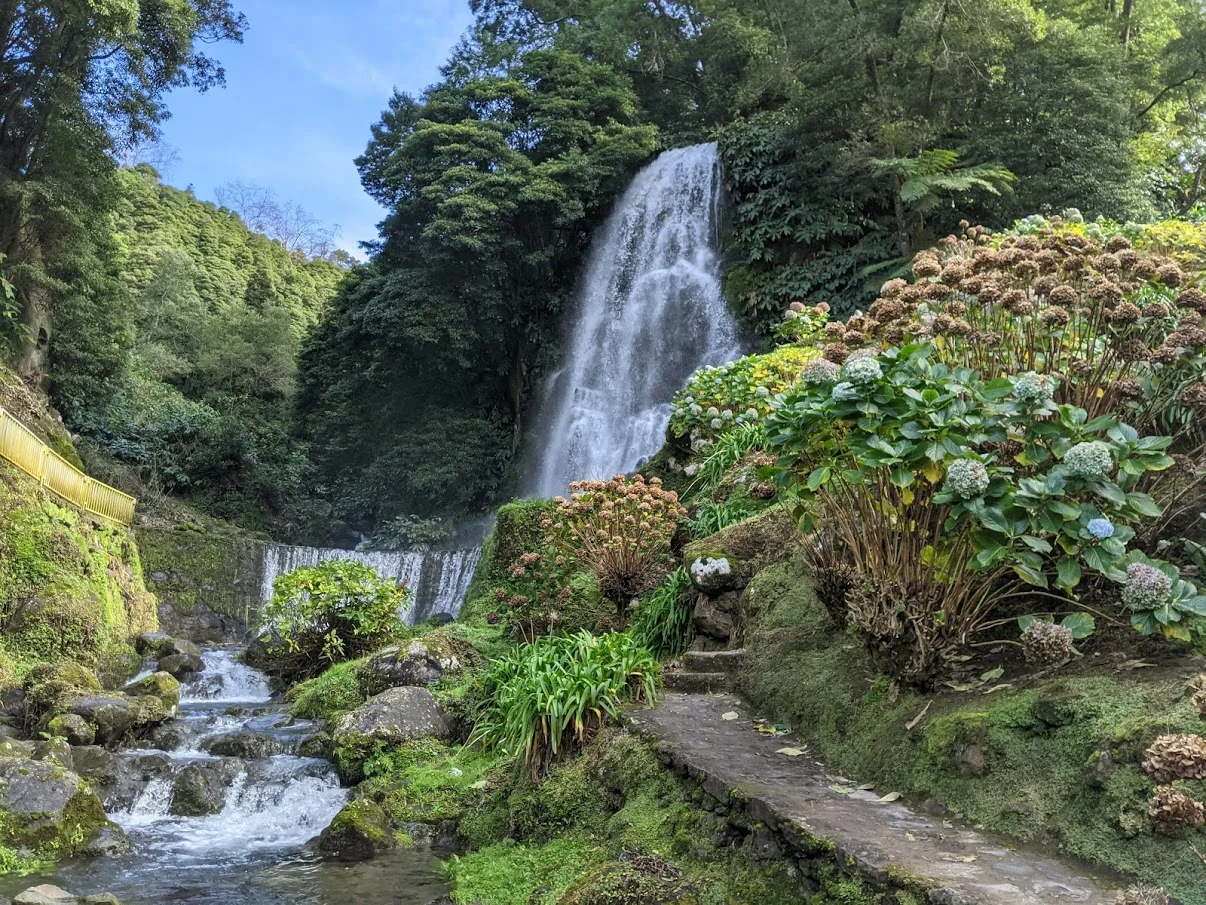A 400 year old water village in a spectacular jungle setting
Sao Miguel island, Azores
PORTUGAL
The Islands of the Azores are known for their impossibly lush, green landscapes, volcanic crater lakes and waterfalls. Among these natural wonders is a 400 year old water village known as Ribeira dos Caldeirões Natural Park.
With an average annual rainfall of over 35 inches the island of Sao Miguel is a watery paradise, replete with stunning volcanic crater lakes, rushing rivers, gentle streams and numerous levadas channeling water to fields, farms and villages. And then there are the countless waterfalls that spring forth from every corner of the island.
One such waterfall, or series of waterfalls, can be found in the Ribeira dos Caldeirões Natural Park which loosely translates into River of Cauldrons Natural Park. Built in the 16th. Century and fashioned after watermills built by the Greeks and Romans the watermills of Ribeira dos Caldeirões were responsible for milling corn, and later wheat, from the neighboring villages. The resulting flour that came from the harvests was enjoyed by locals as well as throughout the islands. For centuries an economy built on ingenuity, hard work and nature’s abundance sustained many people.
Our first glimpse of the waterfalls at Ribeira dos Caldeirões Natural Park came in the summer. Rounding the bend in the road and crossing the old horseshoe bridge there was barely any sign of the numerous falls that draw thousands of tourists to the park so we drove on barely paying attention.
Our return trip in January was a completely different experience however as we saw firsthand how several weeks of heavy rain had transformed the park. What were dry falls the previous summer were now astonishing torrents of water towering over us, racing through numerous channels and dropping into the watermills with fierce intensity.
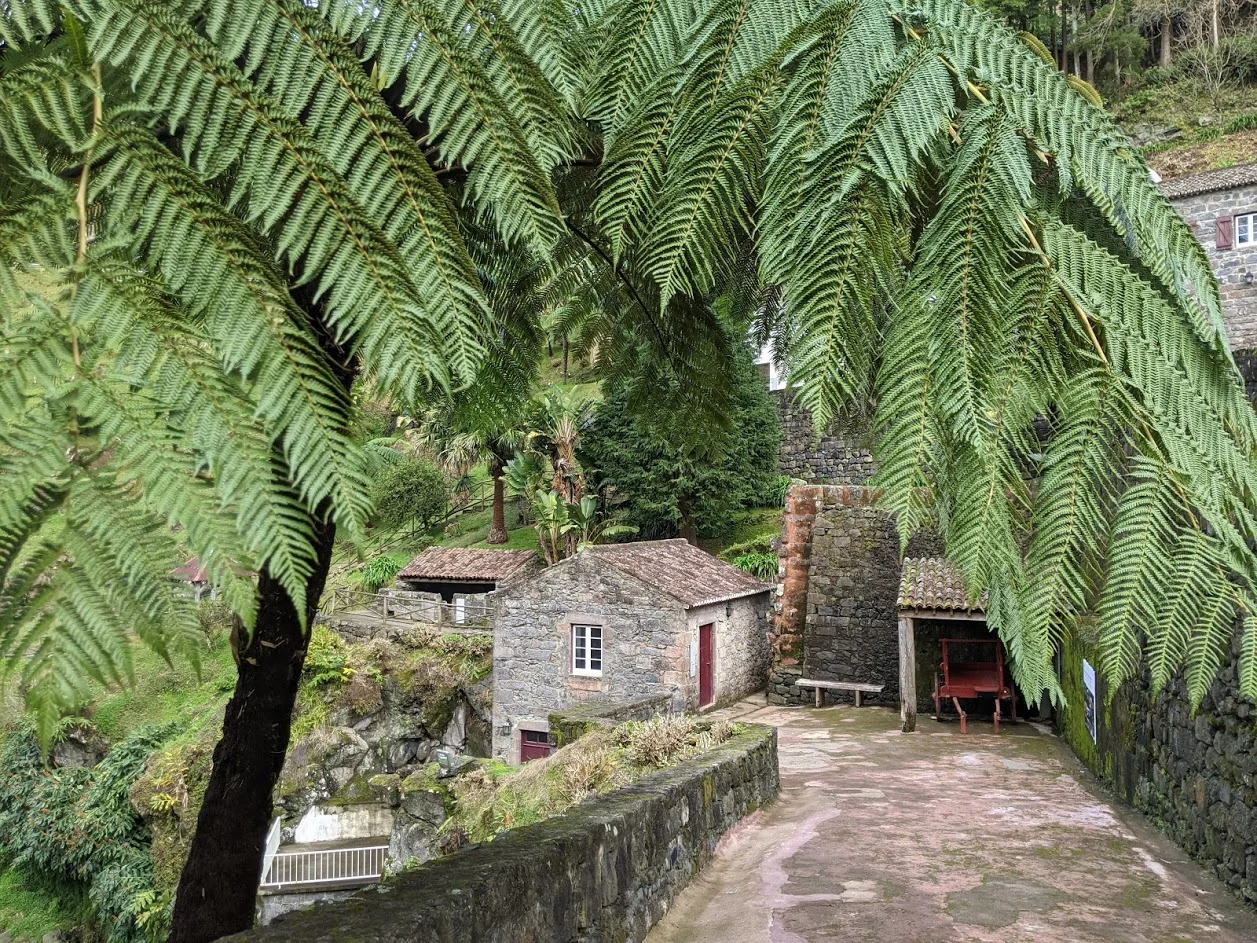
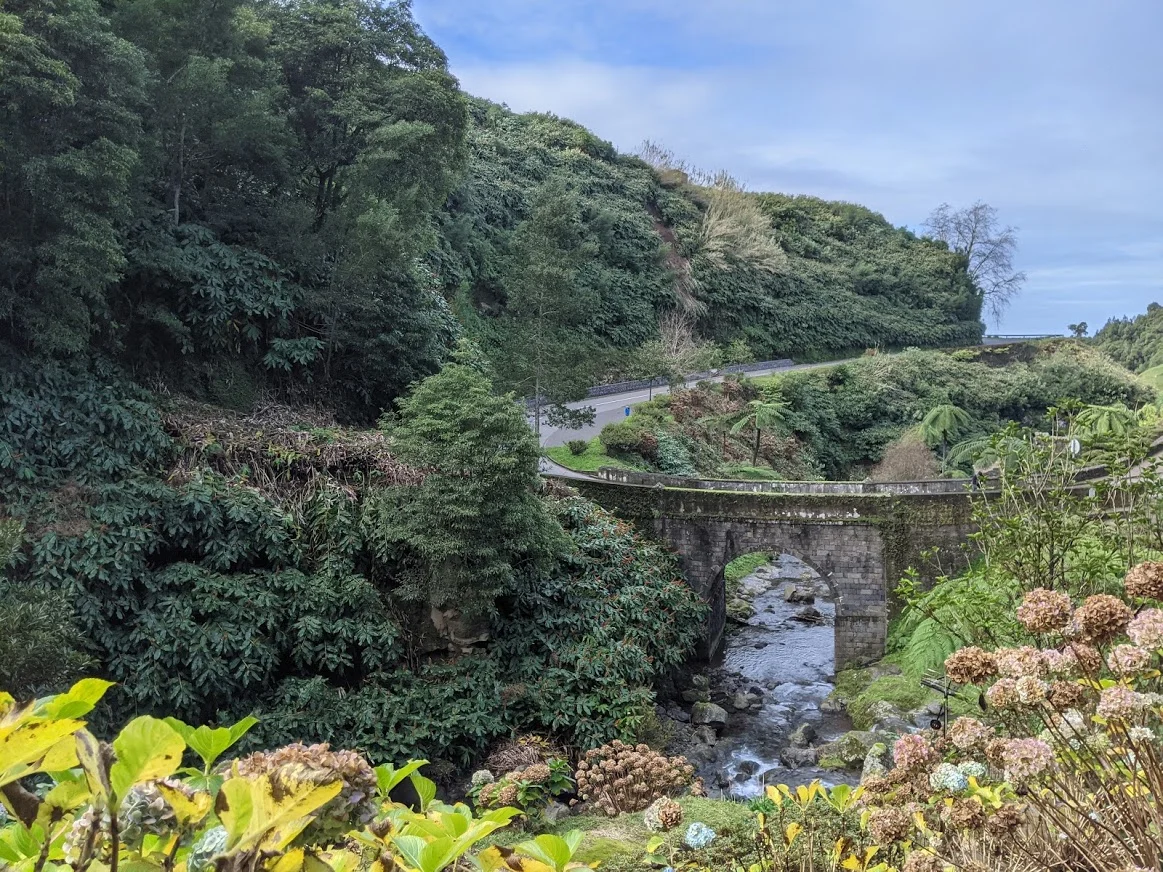
A trip to the 400 year old Village of Water, which has been designated a Municipal Heritage site, is a rare opportunity to step back in time. What we witnessed during our visits was an education in the power of water combined with the will and determination of men and women to make a better life for themselves and their communities. To see such a well preserved snapshot of life centuries ago is an eye-opening experience.
The story of Ribeira dos Caldeirões could never have happened, or be told today, without the awesome power of the 16 waterfalls along with the unique geography of this corner of the island. Water streaming from high above the village was channeled and funneled to drive massive water wheels that ground the corn and wheat into flour. Geography, gravity and exquisite human engineering were the keys to the success of the watermills.
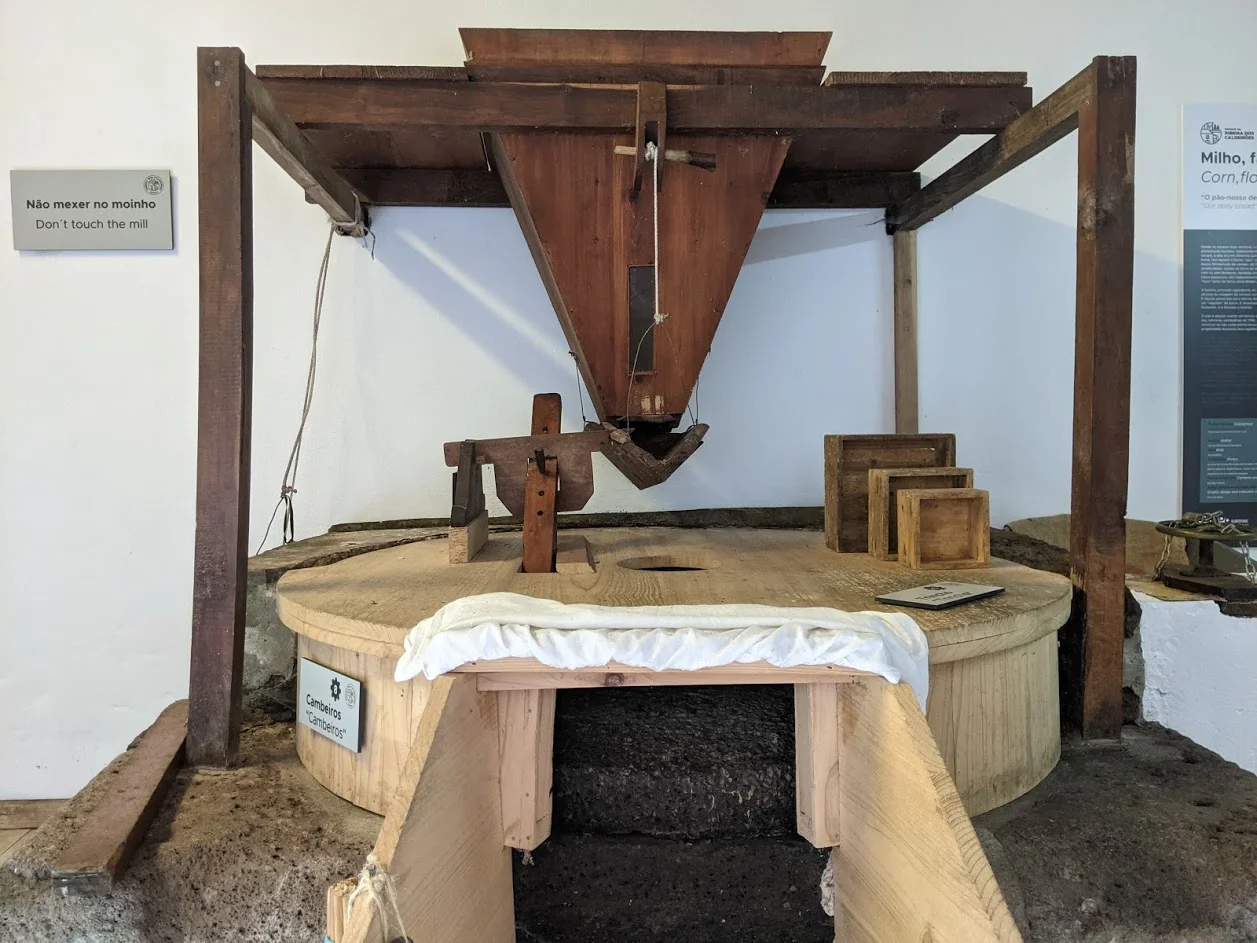
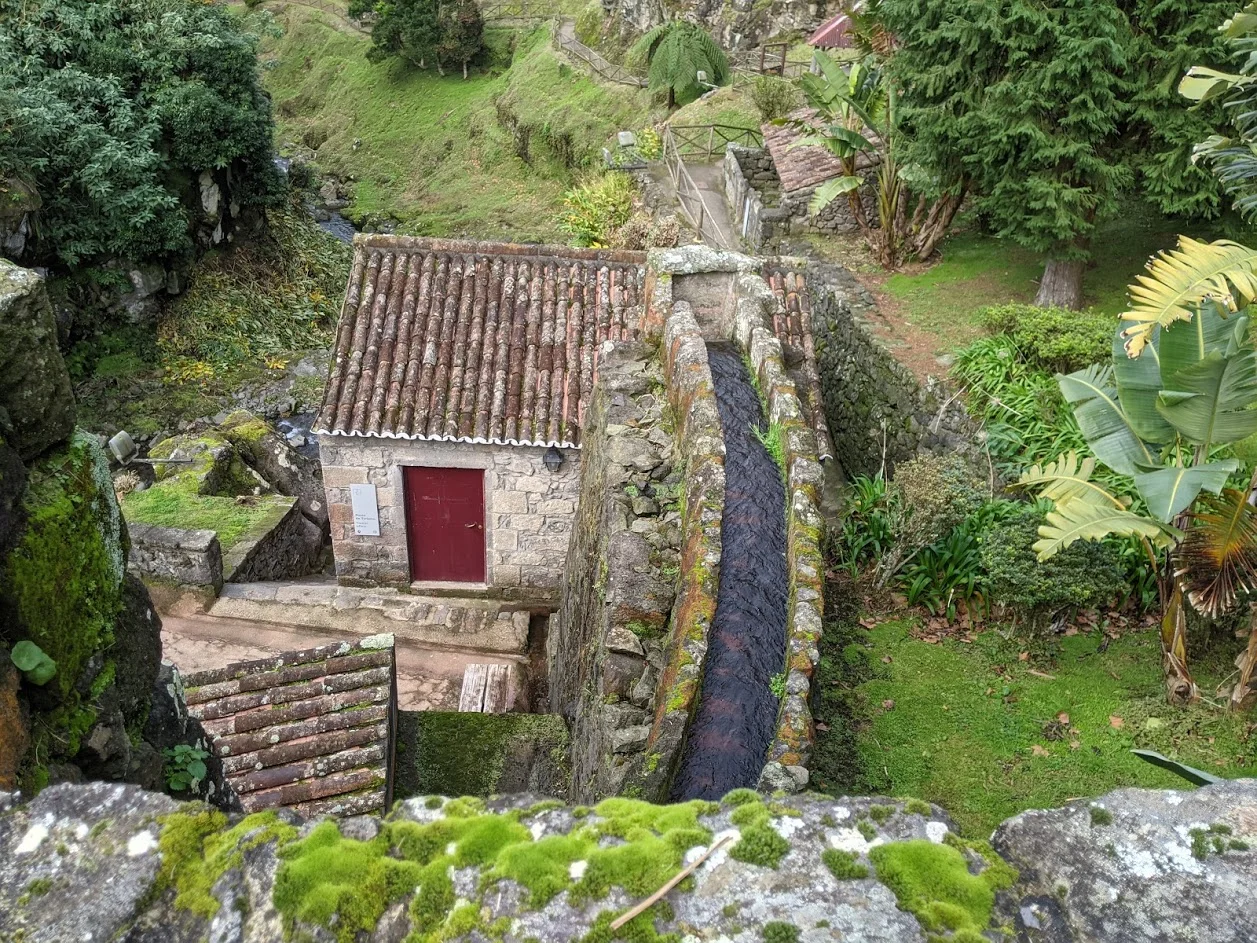
Although the watermills stopped operating in the 1980’s the local municipality of Nordeste took up the task of restoring the property and surrounding buildings. From that decision in 1986 the rehabilitation of the area took close to 20 years, with the reopening of the park taking place in 2005.
During our year long stay on Sao Miguel island we witnessed this pride in preserving the past in numerous ways. In several cases the story of honoring the past was one of the proper balance between political and civic commitment. Once that commitment was forged, and properly executed, the final outcome would result in a correspondingly profound sense of pride in the future.
Today Ribeira dos Caldeirões is one of the most visited stops among travellers to the island. For curious day trippers, nature lovers and island residents this well preserved piece of Azorean history holds something for everyone.

